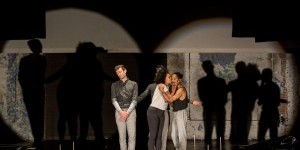THE DANCE ENTHUSIAST ASKS: Yanira Castro/a canary torsi about Her Latest Public Art Event, “Exorcism = Liberation”
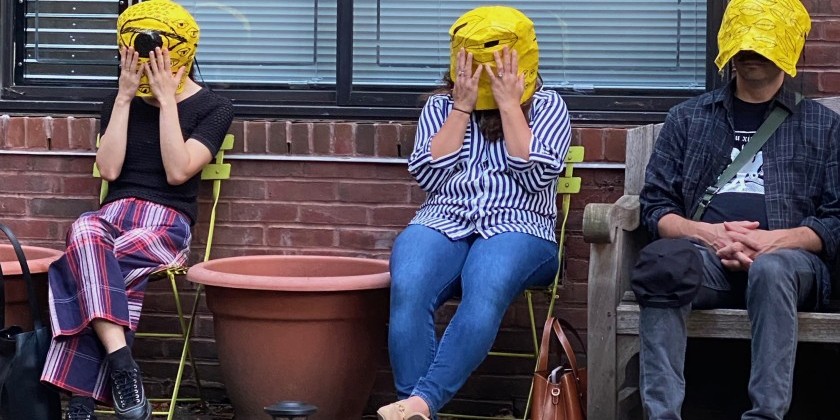
The Dance Enthusiast's Catherine Tharin speaks with Yanira Castro/a canary torsi about her latest work, Exorcism = Liberation, a multifaceted project that investigates relationship to land, self-determination, migration, and climate disaster that runs through November 2024. Alternative futures, imagined through the lens of Puerto Rican culture and the U.S.’s ongoing colonial history, takes place in three American cities with historic and significant Puerto Rican diaspora communities. Born in Borikén (Puerto Rico) and living in Lenapehoking (Brooklyn), Castro creates experiences for the public that include performance, installation, communal practices and interactive technology. “They require you,” says Castro.
Catherine Tharin for The Dance Enthusiast: Can you explain the premise of Exorcism = Liberation?
Yanira Castro: Exorcism = Liberation is an act of intervention, a rehearsal for collective action during a critical American election. This is the launch of a new public art project during the 2024 Presidential election that utilizes familiar campaign materials like posters, pins, lawn signs and stickers to proliferate performance as a counter campaign. It utilizes three slogans, Exorcism = Liberation, I came here to weep, and What is your first memory of dirt?, with accompanying QR codes that are portals to immersive sound experiences. Trusting in the power of empathy, these audio experiences offer space for the public to feel and to act while reflecting on difficult questions.
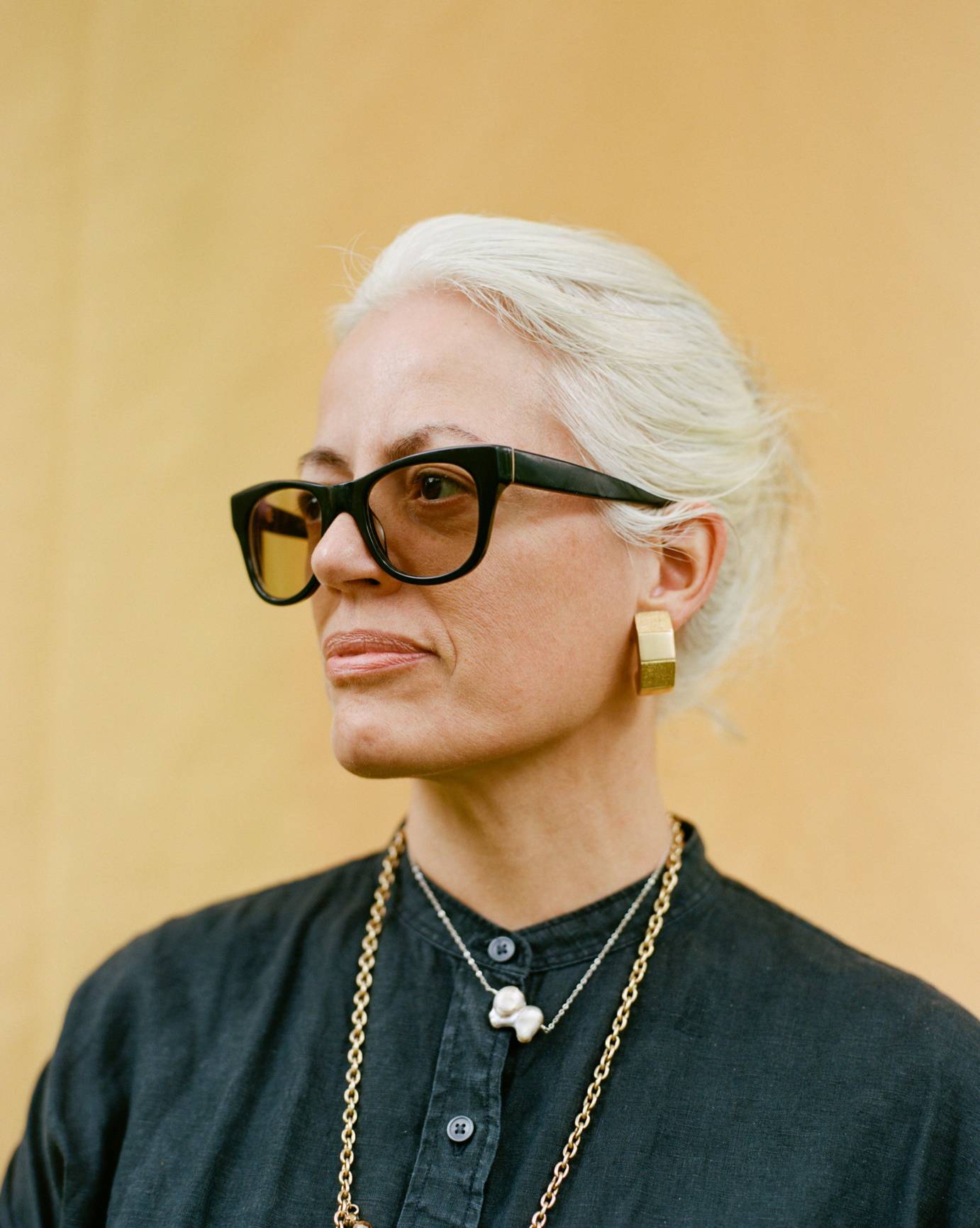
Earlier you asked about my use of the word exorcism. Exorcism is the act of liberating the body. Many religions have rituals for exorcism. In Catholic exorcism the priest cannot end the ritual, the sacrament until the body has been freed of an evil spirit. This reminds me of a similar dedication in choreography and dance: You cannot leave until the performance is done.
What does it mean to be free, to not be owned, to be liberated?
I kept thinking about this and came up with Exorcism = Liberation, a very direct equation. It asks you to sit up and look and consider. It is a provocation, a lightning bolt: here, let’s attend to this for a moment. The equation Exorcism = Liberation, galvanizes our attention and from that comes the potential for conversation and communion.
Exorcism = Liberation considers the election season and and the U.S.’s ongoing relation to territory, occupation through the lens of Puerto Rico. It demands self-determination.
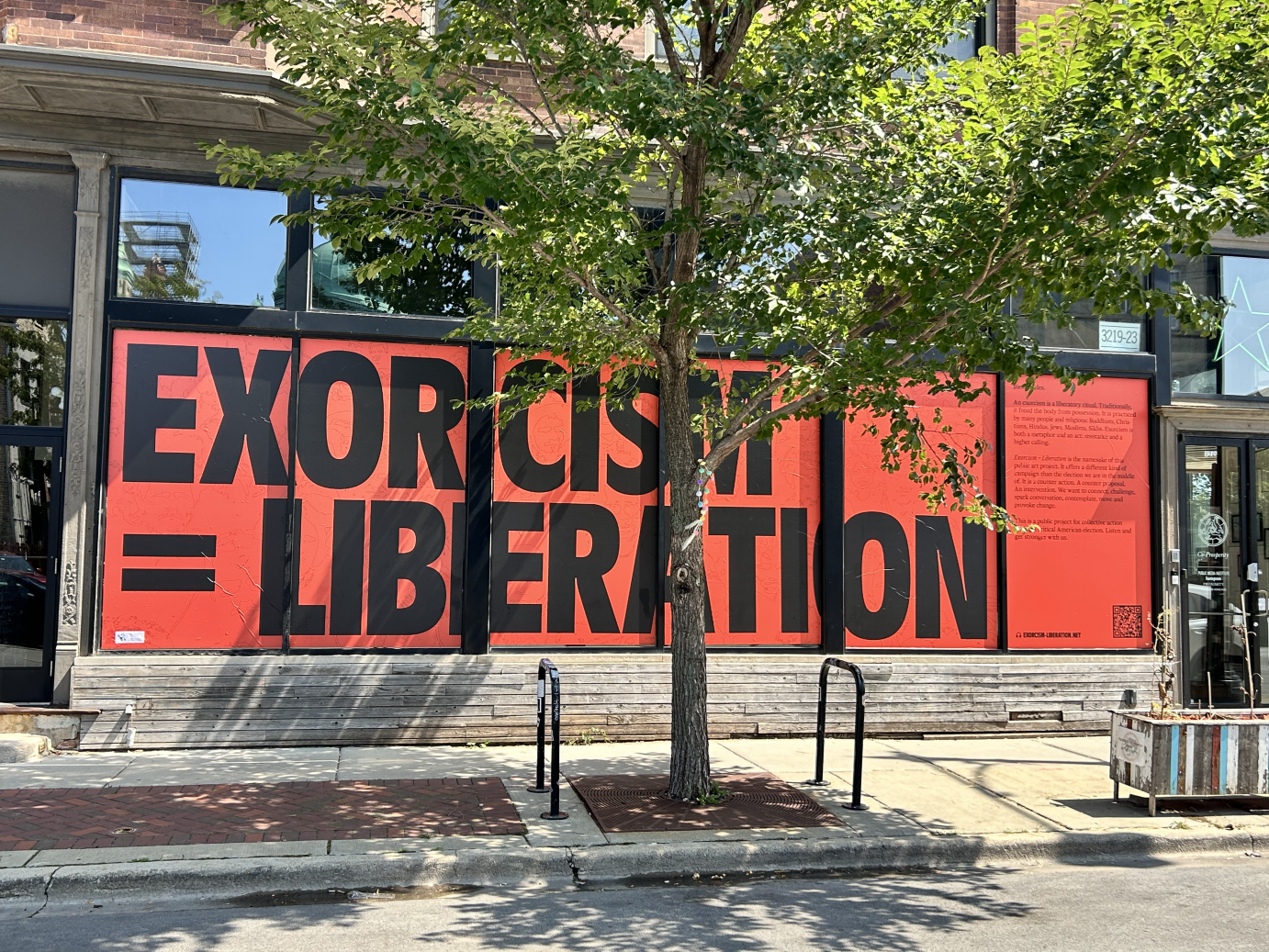
Does Exorcism = Liberation shift now that Kamala Harris is the presidential candidate?
There is a different energy, but the work hasn’t shifted. For me, as a Puerto Rican, coming from the U.S. colony, any talk of democracy is an illusion. Would Kamala deal with Puerto Rico with nuance and care? Her candidacy doesn’t change the project because these questions are still there: what is true liberation and what is true democracy? It is a lot more than a vote.

What is your relationship to Puerto Rico?
I grew up in Puerto Rico until I was 7. Then we moved to Jersey. I didn’t know the language. I learned English largely from TV. I learned body language and cues from TV reruns. I would look at circumstances, and even though I didn’t know what was said, I understood the tone. I understood the dynamics rather than what was specifically discussed. I recognized emotions by watching the language of the body. This was very emotional and impactful. Gesture became magnified for me.
In What is your first memory of dirt?, one of the three slogan audio scores of the project, the listener is invited to remember. To consider one memory. To consider it as a sensorial experience — color, smell, what the dirt felt like. And then moves to: What was the context of that dirt? Does it relate to a fence or garden, a public park, a tree pit? Were there rules around that bit of dirt? Were there places you couldn’t go? The score begins from the place of the sensorial and moves to how society constructs land, shapes it, places borders around it, and what that does to us.
My first memory of dirt was the farm owned by my family. We grew plantains, guavas, and pigeon peas. We had roosters and chickens. There was no running water or electricity. It was, in my memory, a free place. I remember shelling peas and what it sounded like when the peas hit the bowl. My grandparents used pickaxes and I had my trowel; the body moving against the dirt. In the evening, there were sounds of joy when the work was done. We’d sit around a lamp and listen to the birds. We played Parcheesi. More so than any experience, I felt integrated. This is what first memories can be like, sensorial.
We had a barbed wire fence around the farm. Questions of control, desire and ownership come up. The land is central to the family. There is an idea of "security" and "safety" holding property. And alongside that, there is gatekeeping, trespassing, control, and keeping others out. I hold / we hold in our bodies the complexity of the idyllic memory and the reality of what these societal structures do.
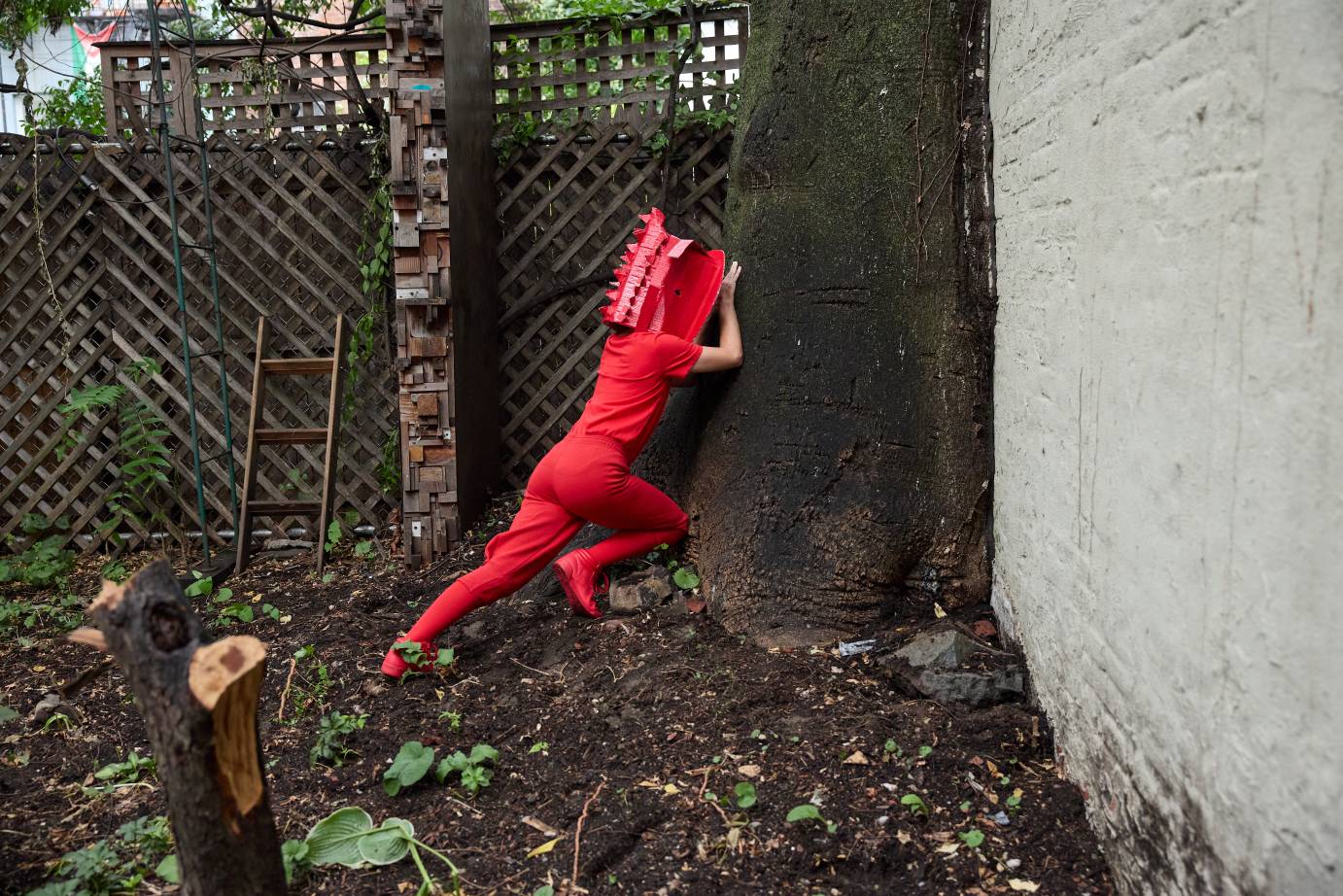
There are months of events in New York City, Chicago and Western Massachusetts. What are examples of the events?
Each geographic location for the project is populated by a strong Puerto Rican diaspora community. New York City has long been a primary place for Puerto Ricans moving to the U.S. There is so much back and forth and cultural exchange. Chicago has the only officially recognized neighborhood for Puerto Ricans in the U.S.: Paseo Boricua. In Holyoke, Western Massachusetts, live the most Puerto Ricans per capita in the U.S. according to the 2010 census.
One of the organizations we have been partnering with in Holyoke, Nuestra Raices (Our Roots) established a farm and several community gardens. They grow Puerto Rican produce on Massachusetts soil: as an example, aji dulce which is the pepper that provides the base for sofrito and Puerto Rican cooking. To me, this is pretty radical work. They are so inspiring in how they think about land, food justice and community. A communal dinner, a collaboration with members of Nuestra Raices, will be held at A.P.E. Ltd’s The WorkRoom in Northampton in November. At the Holyoke public library, we are collaborating with Holyoke Media, working with teens to set up recording stations for an evening at the library. Open to the public, the teens will ask one another about their first memories of dirt and record them. We hope we will be able to share these memories on a future podcast with Holyoke Media.
And the scores will be on the PVTA buses, which are the main public transportation artery of Western MA and connect so many neighborhoods.
In Chicago, we will be canvassing the streets with over 600 lawn signs. The signs mark the gentrification of neighborhoods and the migration of Puerto Ricans from where they arrived in Lincoln Park, to Logan Square and to Humboldt Park and Paseo Boricua. We are hosting a long table conversation at 21c Museum Hotel with 4 amazing guest speakers, and weaving grief wreaths as part of an opening of this work at Honeycomb Network. There is so many ways to attend to this work and people can find a list of all installations and events on the projects events page on exorcism-liberation.net.
%20for%20-%20I%20Came%20Here%20To%20Weep%20at%20Abrons%20Arts%20Center_photo%20courtesy%20of%20the%20artist%20IMG_4181(1).jpeg)
I am interested in learning about the Exorcism=Liberation aural scores. Could you please describe them?
Each of the three aural scores invites the public into a sonic world and toThere is a collective score as we gesture, to move with the same action. When watching a performance each of us has a different experience but our bodies are experiencing the same action. Our bodies are in kinesthetic response when we’re sharing the experience together. These scores are a direct example of that.
There is an invitation in I came here to weep to hold your face in your hands. In What is your first memory of dirt? the main action is to hold your hands open. In Exorcism = Liberation the hand is in a fist. Each slogan score, What is your first memory of dirt? I came here to weep, and Exorcism = Liberation, has a physical manifestation, a simple gesture. Whether you enact it or imagine it–your body is doing it just by listening to the prompt. The suggestion lingers. have been imagining that iIf you’re riding on the bus and invited to open your hand, and you see someone else doing the same, that you might feel that you’re not alone. Even one person witnessing another in action together makes me hopeful. For me, these are ways of rethinking and recreating the world.
Yanira Castro’s work is rooted in communal construction as a rehearsal for radical democracy. She is an interdisciplinary artist who develops performance scores and scenarios where the work unfolds in real time in response to the presence and participation of the audience. Co-creating with her collaborators and the public under a canary torsi (an anagram of her name), she investigates choreography as a practice of collective embodiment, grappling with agency and communal action as a body politic. The process of gathering, witnessing, and decision-making is where performance and civics merge and, for her, is the critical, challenging, and transformational work of performance. She is the recipient of numerous awards, including two "Bessie" awards for Outstanding Production, and has recently been in residence at LMCC, MacDowell, Yaddo, and The Maggie Allesee National Center for Choreography. More info about Exorcism = Liberation events: CLICK HERE






